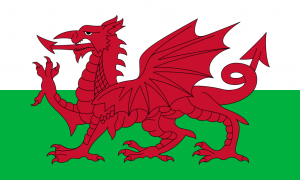Language/Welsh/Vocabulary/Asking-for-Directions
Welsh is a beautiful and distinct language spoken by approximately 20% of the population of Wales. As a Welsh teacher with 20 years of experience, I am excited to help you learn the Welsh language and culture. In this lesson, we will be focusing on traveling and transportation in Wales, specifically how to ask for directions in Welsh. By the end of this lesson, you will have the knowledge and confidence to navigate Wales like a local!
Vocabulary
Let's start by learning the basic vocabulary you will need to ask for directions in Welsh:
- Diolch - Thank you
- Mae'n ddrwg gen i - I'm sorry
- Ble mae'r...? - Where is the...?
- Oes...yma ynghanol y dref? - Is there...in the center of town?
- Eto - Again
- I'r dde - To the right
- I'r chwith - To the left
- Ymlaen - Straight ahead
- Trowch ar y chwith - Turn left
- Trowch ar y dde - Turn right
- Ymchwiliwch - Look for
- Ar y blaen - Ahead
Now let's look at some modes of transportation you might encounter in Wales:
- Bws - Bus
- Trên - Train
- Car - Car
- Bicig - Bicycle
- Parth cyrru - Driving lane
- Llwybr beicio - Bike path
- Troedffordd - Footpath
Armed with these key phrases and vocabulary, you'll be sure to find your way around Wales with confidence and ease!
Common Phrases
Now that you have the basic vocabulary needed to ask for directions in Welsh, let's take a look at some common phrases that you might encounter in everyday traveling situations:
- "Ble mae'r trên?" - Where is the train?
- "Oes bws yn mynd i Gaernarfon?" - Is there a bus going to Caernarfon?
- "Dwi'n chwilio am... " - I'm looking for...
- "Sut i gyrraedd...?" - How do I get to...?
- "Sut mae 'r ffordd at y parc?" - How do I get to the park?
Useful phrases for giving directions:
- "Trowch ar y dde ar ôl i chi fynd heibio'r dafarn" - Turn right after passing the pub.
- "Trowch ar y chwith ar ôl i chi fynd heibio'r siop cig" - Turn left after passing the butcher shop.
- "Ymlaen am 500 metro" - Straight ahead for 500 meters.
- "Mae'r parc ar y dde" - The park is on the right.
- "Fyddwch chi'n cyrraedd y dafarn ar y chwith" - You'll reach the pub on the left.
Keep in mind that Welsh speakers may use different units of measurement or directions than what you're used to, so don't be afraid to ask for clarification or repetition if you don't understand at first.
Culture and Interesting Facts
Wales is a small country with a rich history and culture, and traveling through Wales can offer a unique and enlightening experience. Here are a few cultural and historical tidbits to keep in mind while exploring Wales:
- Wales is known for its stunning natural beauty, from its rugged coastline to its rolling hills and mountains. Be sure to take advantage of the many hiking trails, scenic drives, and outdoor activities Wales has to offer.
- Welsh is a Celtic language, and while most people in Wales speak English as well, learning some Welsh can help you connect with locals and show your appreciation for the culture.
- The Welsh are known for their hospitality and friendliness, so don't be afraid to strike up a conversation with a local or ask for recommendations for places to visit or eat.
- Wales is also home to a rich history and many iconic landmarks, such as the medieval castle in Caernarfon and the ancient ruins of Caerleon.
- Traditional Welsh cuisine includes dishes such as Welsh rarebit (a kind of cheese toast), cawl (a hearty vegetable soup), and bara brith (a fruit cake).
- Wales is famous for its music and art, from the iconic Welsh male voice choir to the works of famous Welsh artists like Kyffin Williams and Gwen John.
By immersing yourself in Welsh culture and practicing your language skills, you'll be sure to have an unforgettable experience traveling through Wales.
Practice Exercise
Now it's time to practice what you've learned! Use the following table to practice asking for and giving directions in Welsh. Try to use as many of the phrases and vocabulary words you have learned in this lesson as possible.
| English | Welsh | Pronunciation |
|---|---|---|
| Excuse me, how do I get to the park? | Esgusodwch fi, sut mae dod i'r parc? | es-gis-AWDH-vee, sitt mye dod eerr pack? |
| Is there a bus that goes to the museum? | Oes bws yn mynd i'r amgueddfa? | oyss booss un mind the am-GEDD-va? |
| Turn right at the traffic lights | Trowch ar y dde yn y goleuadau traffig | trooch arr ee th-day uhn uh-go-LYE-dye traff-eegh |
| How far is it to the train station? | Pa mor bell mae hi i'r orsaf drenau? | pa mor bell my y hee eerr or-sav TREN-ai? |
| Where is the nearest bike path? | Ble mae'r llwybr beicio agosaf? | bleh myerr th-LWIB-er baechio AH-goes-av? |
Well done! Keep practicing and building your Welsh vocabulary and cultural knowledge, and soon you'll be speaking Welsh like a pro.

